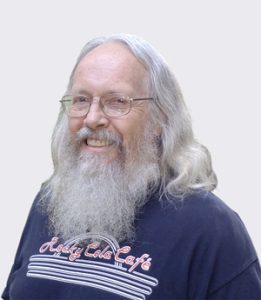Duck and Cover – The 1955 A-bomb Drill
For a scant four years after WWII, the U.S. was the only nation with “the bomb.” That all changed in 1949 when the Soviet Union detonated its first nuclear device. We were shocked that they had caught up with us so quickly, and we raced ahead with our arms programs. That was the beginning of the “Cold War” – a horrible time in history when the only thing preventing one side from attacking the other was that in any exchange of fire, both sides would be completely destroyed.
In 1955, the saber-rattling was getting particularly loud. At Bikini Atoll, above-ground tests were producing blasts a thousand times more powerful than the Hiroshima blast. Very real plans began to be put into place to deal with the reality of a nuclear attack. A nationwide drill called “Operation Alert” was planned for June 15, 1955 in which 55 U.S. cities, including Los Angeles, would be hit by “relatively small” bombs in the one to five megaton range. (“Relatively small” – the 15 megaton bomb dropped on Bikini Atoll in 1954 would have killed every person in an area the size of New Jersey!)
Some cities would have advance warning, a steady wail from the air raid sirens. That meant that an attack was coming and everyone should get to a shelter or prepare to evacuate. Other cities would get no pre-warning ¬– just that they were under attack right now, an undulating wail from the sirens. That meant duck and cover.
Here in Los Angeles, the test was to come mid-day on Wednesday, June 15. At 9 a.m., the alert would come that bombers were incoming (this was before intercontinental missiles). At 11:46 a.m. the warning would come to send people to shelters. And at 12:45 p.m., three bombs would hit metro Los Angeles. The first would hit south of Downtown LA at Florence and Broadway, followed by two more. The closest to us would hit Hollywood at the intersection of Santa Monica and Gower. Lethal amounts of radiation would eventually kill everyone in Glendale up to the Verdugo Woodlands area. Those trying to flee to the relative safety of the Crescenta Valley would bottleneck by Glendale College, and few would make it through. Glendale would be considered untenable, the entire area contaminated. Glendale’s four hospitals would be too radiated to treat the thousands of injured. Transportation would be paralyzed; all utilities would no longer exist.

president of the Historical Society
of the Crescenta Valley and loves local history. Reach him at
lawlerdad@yahoo.com.
The drill was to last about 24 hours and would, for the most part, test the resources of emergency personnel. How real the drill would be seems to have been on a city-by-city basis. It appears from newspaper reports that here in CV the sirens were not even sounded. But in other cities they were, and citizens were to act as though the attack was real. In Los Angeles, government workers went to shelters when the sirens sounded, while most people were just confused. In Denver and Houston, the emergency personnel actually evacuated large numbers out of the city. In New York 17,000 spectators in Yankee Stadium simply ignored the sirens and sat in place waiting for the game to start.
The drill was deemed moderately successful but the projected death toll from that first strike was sobering. Nationwide, 5 million killed, 5 million injured, and 10 million homeless refugees. In LA, the death toll was 800,000, with over a million heading north and south as homeless refugees. Here in the Crescenta Valley, we would be relatively safe until wind spread the radiation to us. We couldn’t even enter the Glendale area.
We think of the ’50s and ’60s as “happy days,” but there was a darkness then, and a lot of fear. It was not “if” but “when.” A UCLA scientist declared at a wrap-up session after the drill that the best way to calm a frightened nation is to present the facts of what would happen in a real attack. He then presented the fact that we could write off as dead anyone living in a large city.
I don’t think his facts did much to calm a frightened nation.
